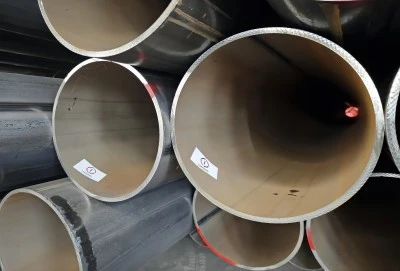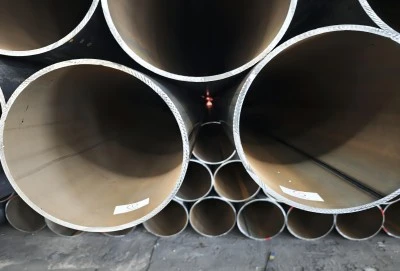When it comes to selecting the right API 5L welded pipe for your project, several crucial factors come into play. These pipes, widely used in the oil and gas industry, are known for their durability, strength, and versatility. However, making the right choice requires a deep understanding of various elements that impact performance, longevity, and overall project success.
|
|
|
How does pipe grade selection impact performance and durability?
The grade of an API 5L welded pipe is perhaps one of the most critical factors influencing its performance and durability. API 5L pipes are available in various grades, each designed to meet specific requirements in terms of strength, toughness, and chemical composition. The most common grades include B, X42, X52, X60, X65, and X70, with higher numbers indicating greater yield strength.
When selecting a grade, it's essential to consider the intended application and operating conditions. Higher-grade pipes, such as X70 or X80, offer increased strength and are suitable for high-pressure applications or environments with extreme temperatures. However, they may also come with higher costs and potentially reduced ductility.
Lower grades, like Grade B or X42, while not as strong, often provide better ductility and are more cost-effective for less demanding applications. These grades are typically used in low-pressure systems or where the emphasis is on corrosion resistance rather than high strength.
The impact of grade selection on performance is significant. Higher-grade pipes can withstand greater internal pressures and external loads, making them ideal for deep-water pipelines or areas prone to seismic activity. They also tend to have better resistance to hydrogen-induced cracking (HIC) and stress corrosion cracking (SCC), which is crucial in sour service environments.
On the other hand, lower-grade pipes might be more suitable for applications where flexibility is a priority, such as in areas with unstable soil conditions. They also tend to be easier to weld, which can be a significant advantage in field operations.
Durability is another aspect heavily influenced by grade selection. Higher-grade pipes generally offer better resistance to wear and tear, potentially extending the lifespan of the pipeline. However, this increased durability must be balanced against other factors such as cost, availability, and ease of installation.
What role does pipe diameter, thickness, and length play in selection?
The dimensional characteristics of API 5L welded pipe - including diameter, thickness, and length - play a crucial role in pipe selection and overall system design. These factors not only affect the pipe's physical properties but also influence its performance, installation process, and cost-effectiveness.
Pipe diameter is a primary consideration in determining flow capacity. Larger diameters allow for greater flow rates and reduced pressure drop over long distances. However, they also increase the weight of the pipe, potentially complicating transportation and installation. The choice of diameter should be based on the required flow rate, pressure requirements, and any constraints in the installation environment.
Wall thickness is another critical factor that directly impacts the pipe's pressure-bearing capacity and overall strength. Thicker walls provide better resistance to internal pressure and external loads but increase the pipe's weight and cost. The selection of wall thickness should consider factors such as internal pressure, external loads (like soil pressure for buried pipelines), and any potential for corrosion or erosion.
Pipe length, while often overlooked, can significantly affect installation efficiency and overall project costs. Longer pipes mean fewer joints, which can reduce installation time and the potential for leaks. However, they may require special transportation arrangements and handling equipment. The choice of pipe length should balance these factors against the specific requirements of the project site and installation method.
It's worth noting that the interplay between these dimensional factors is complex. For instance, increasing the diameter while maintaining the same wall thickness will result in a pipe that can handle higher flow rates but may have reduced pressure-bearing capacity. Similarly, increasing wall thickness for a given diameter will enhance pressure resistance but may impact flow characteristics.
In practice, the selection of these dimensional characteristics often involves a balance between performance requirements, material costs, and installation considerations. It's not uncommon for pipeline designers to use sophisticated modeling software to optimize these parameters for specific project conditions.
Why are PSL1 and PSL2 distinctions crucial when purchasing API 5L welded pipe?
The Product Specification Level (PSL) is a critical distinction in the API 5L standard that significantly impacts the quality, testing requirements, and overall reliability of the welded pipe. Understanding the differences between PSL1 and PSL2 is crucial for making an informed purchase decision.
PSL1 pipes are manufactured to meet basic API 5L pipe requirements. They undergo standard testing procedures and are suitable for many general applications. PSL1 pipes are often chosen for less demanding environments or where cost is a primary consideration.
On the other hand, PSL2 pipes are subject to more stringent requirements and additional testing. They offer enhanced properties, particularly in terms of toughness and resistance to failure. PSL2 pipes are typically selected for more critical applications, such as high-pressure systems, sour service environments, or offshore installations.
The key differences between PSL1 and PSL2 include:
- Chemical Composition: PSL2 pipes have tighter controls on chemical composition, particularly for elements like carbon, phosphorus, and sulfur. This results in improved weldability and reduced susceptibility to certain types of corrosion.
- Mechanical Properties: PSL2 pipes generally have higher strength requirements and tighter tolerances on yield strength and tensile strength.
- Toughness Testing: PSL2 pipes undergo mandatory Charpy V-notch impact testing, which is not required for PSL1 pipes. This ensures better fracture toughness and resistance to brittle failure.
- Non-Destructive Testing: PSL2 pipes are subject to more extensive non-destructive testing, including full-body ultrasonic or electromagnetic inspection.
- Traceability: PSL2 pipes require full traceability from the steel mill to the final product, ensuring better quality control and accountability.
The choice between PSL1 and PSL2 should be based on the specific requirements of your project. While PSL2 pipes offer superior properties and reliability, they also come at a higher cost. For less critical applications or where budget constraints are significant, PSL1 pipes may be sufficient.
However, for projects involving high pressures, extreme temperatures, or corrosive environments, the additional assurance provided by PSL2 pipes can be invaluable. The enhanced properties and rigorous testing of PSL2 pipes can lead to improved safety, longer service life, and reduced maintenance costs over the life of the pipeline.
Contact Information
Selecting the right API 5L pipe involves careful consideration of multiple factors, including grade, dimensions, and PSL level. Each of these elements plays a crucial role in ensuring the pipe's performance, durability, and suitability for your specific application.
At Longma Group, we understand the complexities involved in choosing the perfect API 5L welded pipe for your project. Our team of experts is ready to guide you through the selection process, ensuring you get the ideal pipe that meets your technical requirements and budget constraints.
Don't leave your pipe selection to chance. Contact us today at info@longma-group.com to discuss your API pipe needs. Let our experience and expertise help you make the right choice for your next pipeline project.














